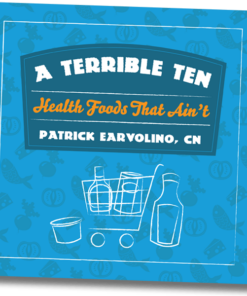By Samuel M. Beale Jr., MD

[The following is a transcription of the original Archives document. To view or download the original document, click here.]
Insulin and Cancer[spacer height=”20px”]
The molecular weight of insulin is 39,000. It contains ten of the essential amino acids. It is associated with anabolism and is in opposition to some of the catabolic glands. Perhaps because of its amino acid content, insulin appears to furnish the material necessary to repair defects in the nerve mechanism that transmits trophic impulses and thus aids in the restoring of a perverted cell to normal.
Some of the indications of cancer susceptibility are:
- A defect in the metabolism of glucose—the sugar curve runs high in proportion to the degree of malignancy
- A disturbance of the calcium-phosphorus balance
- Hyperalkalinity of the blood (a tiny variation from normal)
All the hormones are secreted in minute amounts and are tremendously potent. A teaspoonful of pure insulin would supply a diabetic taking 40 units daily for more than eight years.
The balances of the body are delicate in the extreme. The variations from normal that constitute cancer susceptibility are so minute that the imagination fails to provide a tangible picture. The thyroid, secreting 0.5 mg of thyroxine daily, would require 100 years to produce a dram [1.77 g]. And the thyroid is a trifle overactive in cancer. (It is also the largest of the endocrine glands.)
Having the delicacy of body balances in mind, it seems reasonable to expect to restore them with minute amounts of the right material. And insulin is that material.
Insulin may be given once or twice each week in a dose of 3 to 5 units. Safe guides are the blood sugar and the blood pressure. In superficial growths favorable results may follow injections directly under the growth.
As a rule insulin should be used only as an adjunct to the accepted methods. A period of six weeks given to the use of insulin and the elimination of refined carbohydrates from the diet before the institution of surgery and radiation will be time well spent.
Illustrative Cases
Case 1: J.M. When five weeks old, this baby presented a malignant nevus on the tip of her nose. In one week this growth had extended down onto her cheeks and upper lip. She was given 0.5 unit of insulin, and there was no more growth. One half unit of insulin was given each week, and at the end of three months there remained [but] a few visible veins, just below the nose. (These veins disappeared entirely in a few years).
Case 2: E.C. This middle-aged man is a diabetic. He presented a growth at the left commissure of the mouth measuring 3/8 inch across. By biopsy this was [determined to be] a capillary hemangioma. Insulin was injected directly under this growth twice weekly for five weeks, after which time it was gone, leaving no scar.
Case 3: E.D. This 40-year-old woman presented a huge carcinoma: simplex of the left breast with a bleeding ulcerated area the size of the palm of a large hand. There were palpable nodes in the axilla. Three units of insulin were given twice each week for 5 1/2 weeks. There was a marked regression of the growth. She then had the indicated surgery and a follow-up of X-ray radiation. There has been no recurrence in nineteen years.
Case 4: G.S. This 75-year-old man presented a cancer of the sclera of the left eye extending from the cornea downward and outward for 0.5 inch. The diagnosis was made by biopsy at one of the best hospitals, and a date was set for operation, consisting of enucleation of the eye, two weeks from the time of making the diagnosis. This gave me just two weeks for treatment, but [after] that time, the malignancy was so nearly gone that when he presented himself at the hospital, it was decided that operation was not indicated. This growth entirely regressed under the insulin treatment alone and did not return. And, incidentally, a pterygium that he had had a long time disappeared.
Notes
Case No. 1. [She] is now in high school and is well.
Case No. 2. There has been no recurrence of growth.
Case No. 3. Died April 5, 1956, of arteriosclerotic heart disease and cholelithiasis (no cancer).
Case No. 4. Died seven years after the above report and had no growth at the time of his death.
Further Comment
The fact that insulin is an oxidizing catalyst may have some bearing on its activity in overcoming cancer, since the process of oxidation is deranged in cancer cell metabolism. But a more likely explanation is to be found in the action of insulin in very small doses in reestablishing normal balance of the functions of the pituitary gland and, through action on this gland, reestablishing normal structure and function of the neurons and nerve pathways involved in the generation and transmitting of trophic impulses. (I have proven that insulin is helpful in correcting many other cell perversions and degenerations. If the above-mentioned effect of insulin proves to be true, then the explanation is logical.)
Because insulin is a product of one of the anabolic glands and the thyroid is one of the catabolic glands, I gave insulin in three-unit doses to a number of cases of hyperthyroidism, one of them with a BMR [basal metabolic rate] of plus 84. Thhis treatment brought the BMR down to a plus 16, with an abatement of all symptoms.
Since the thyroid is influenced by the pituitary body via its thyrotropic hormone, it seems reasonable to predicate the effect of insulin on the thyroid through a stabilizing effect on the pituitary body. Insulin is contraindicated in adynamic states such as hypothyroidism, low blood pressure, and low blood sugar.
By Samuel M. Beale, MD, Sandwich, Massachusetts. Reprinted from News Review, London, England, March 1947, by the Lee Foundation for Nutritional Research.
Form No. VE- 257
Lee Foundation for Nutritional Research
 Get self-health education, nutrition resources, and a FREE copy of A Terrible Ten: Health Foods That Ain't ebook.
Get self-health education, nutrition resources, and a FREE copy of A Terrible Ten: Health Foods That Ain't ebook.

